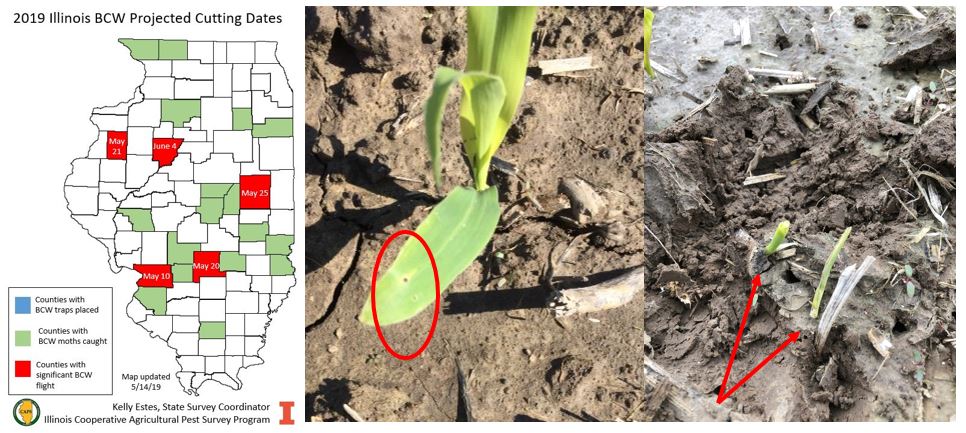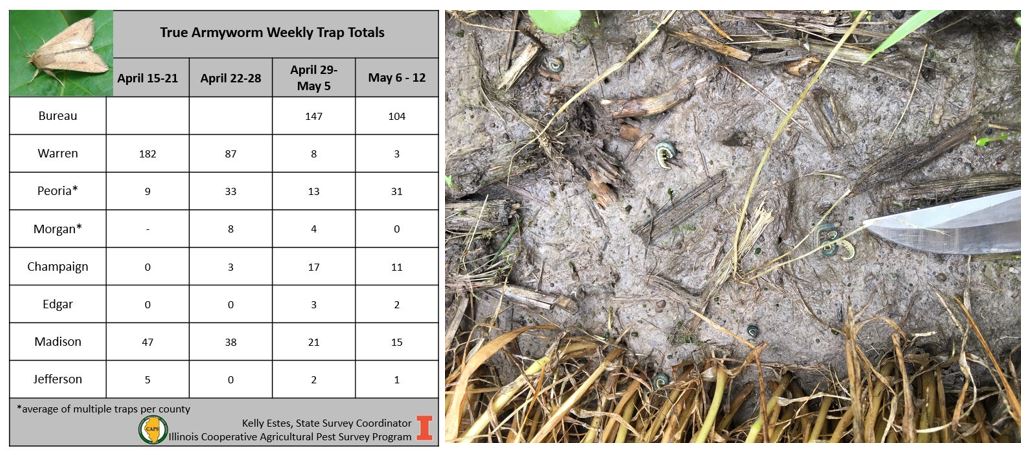Insect Trapping Update: May 15
Cooperators around the state are monitoring black cutworm and true armyworm traps this spring.
Black Cutworm
Continued flights have occurred this last week, but at low levels overall. Reports of corn emergence have been trickling in and along with those reports are also those of black cutworm feeding. As a reminder, some management suggestions from Nick Seiter’s 2018 article (http://bulletin.ipm.illinois.edu/?p=4151):
- Infestations are more likely in later planted corn, as delayed planting means larger cutworm larvae are present at earlier stages of corn development.
- Black cutworm moths prefer to lay their eggs on grasses, not bare ground. Therefore, fields with grassy weeds present at or shortly before planting are more likely to experience damaging populations. Similarly, monitor fields closely if a grass cover crop (e.g., cereal rye) is terminated while corn is susceptible to cutworm damage (emergence to ~V5).
- The economic threshold for black cutworm is 3% of plants cut with black cutworms still present in the field. Look for plants that look like they have been cut roughly with scissors close to the base (Fig. 1); plants with intact roots (Fig. 2) were most likely dug up by birds and do not represent cutworm damage. Remember, larvae (Fig. 1) do their feeding at night and hide in residue or just below the soil surface during the day, so you will have to do a little bit of digging near the base of the plant to find them.
- Several Bt corn trait packages offer suppression of black cutworm, but these might be less effective under heavy infestations or against later stage larvae. Most pyrethroid insecticides labeled for use in corn will do an excellent job of controlling larvae as a rescue treatment; just remember that they only pay off when an economic threshold has been reached.

True Armyworm
Sporadic flights seen again this week. Numbers were overall low, with the exception of Bureau county. This is just a selection of sites to give you an idea regionally what is going on around Illinois. I have had reports of armyworm in wheat in southern Illinois – varying larval instars and densities.

Despite the cool temps and rain, insects are still out there and scouting will be key. Feel free to share field observations with us – kcook8@illinois.ed or nseiter@illinois.edu





